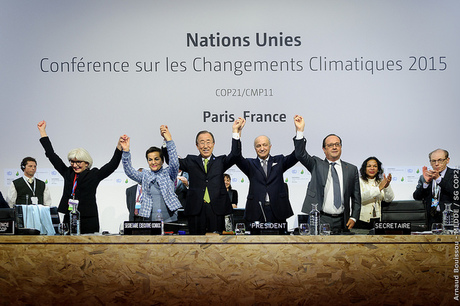What does Paris mean for carbon and waste in Australia?
By Mike Ritchie, Managing Director, MRA Consulting Group
Wednesday, 13 January, 2016

As you are no doubt aware, Australia, along with the global community, has finally committed to limit anthropogenic global warming to less than a 2°C increase (with a 1.5°C increase as an aspirational target).
Australia has a chequered history in respect of climate change policy, and it is a brave person who would bank on consistent government policy going forward. Think ‘greatest moral challenge’, CPRS baseline and credit, ETS cap and trade, fixed-price period ‘carbon tax’, climate change is ‘crap’, ERF and Direct Action.
The hope is that the Paris agreement now sets an unmistakable policy direction — reducing emissions and increasing the abundance of renewable and low-emission technologies. The problem for Australian investors, and particularly investors in the waste and recycling sector, is the absence of continuing strong market signals and economic drivers of change.
Under the current Direct Action policy, Australian carbon credit units (ACCUs) are currently worth $12.25 each (average price at the last auction). So, for example, diverting a tonne of municipal solid waste (MSW) from landfill is worth approximately $6–8/t of waste in a metro city (taking into account the MSW emissions factor of 1.14 tCO2-e and an average ‘whole of life’ landfill gas capture rate of 50%). Meanwhile, a tonne of organics diverted from a rural landfill (with no gas capture) is worth approximately $12/t of waste.
Neither is a big financial incentive for investors, bearing in mind that landfill levies alone in most states range from $50–133/t of waste. A carbon price of $6–8/t (of waste) is a long way from being a lever of change. It is extra cream if a project is already viable.
So will we ever see a return of emissions trading putting a higher price on carbon? I think yes (probably after an election). Surprisingly for many, the mechanism is already there.
In the detail of the Direct Action policy is a little-known detail called ‘the safeguard mechanism’. It limits the emissions of the ‘big emitters’ (about 140 companies with emissions greater than 100,000 tCO2-e/year) and has legal controls and penalties if they breach a set cap. These companies can trade excess emissions to other liable entities. It looks and behaves a lot like emissions trading.
The government could easily amend the safeguard mechanism to bring back emissions trading without falling foul of the ‘carbon tax’ trap.
Only two tweaks of the current system are required:
- Increase the coverage to include most large emitters; say, those with emissions over >25,000 tCO2-e/year (approximately 400 companies). Like many others, I do not think this should include landfills unless the government agrees to finally using a simple proxy for emission calculations. The costs of carbon accounting and the errors associated with it, under the old scheme, were simply ridiculous.
- Revise the baselines (the upper limit emitters must not cross) downwards over time in line with Australia’s emission reduction target. These are currently based on the highest level of historical emissions for the period 2009–10 to 2013–14.
These two simple changes to the existing safeguard mechanism would allow for a return of emissions trading without the costs and political difficulties of the carbon tax.
A genuine and flexible trading mechanism is the only way to drive deep emissions cuts in the economy at least cost.
Why least? Because if Company A needs to reduce its emissions but Company B can do it cheaper, it makes sense for A to simply purchase abatement from Company B. So as an economy we access the cheapest abatement projects possible, in an efficient way. That is why emissions trading is cheaper for the economy compared with all other mechanisms.
Finally, what can waste operators expect in 2016 and beyond from either Direct Action or an emissions trading arrangement? It is just a matter of degree. Depending on the price of carbon, the budget funding for Direct Action and/or the extent of regulatory intervention, 2016 will see the further expansion of:
- landfill gas capture with flaring or energy generation;
- organics diversion from landfill;
- source-segregated and MBT residual composting;
- recovery of high embodied energy materials;
- MSW, commercial and industrial waste (C&I) and construction and demolition waste (C&D) sorting and recovery;
- energy efficiency; and
- energy from waste.
How to navigate Australia’s new climate regulations
Australia’s new mandatory climate reporting regulations are set to take effect next year,...
A concrete use for carpet fibres
Australian engineers have come up with an unexpected use for discarded carpets: as a means to...
COP29: finance, a "crucial" opportunity and a seat at the table
Leaders and diplomats from around the world are descending on Baku, Azerbaijan, this month for...








